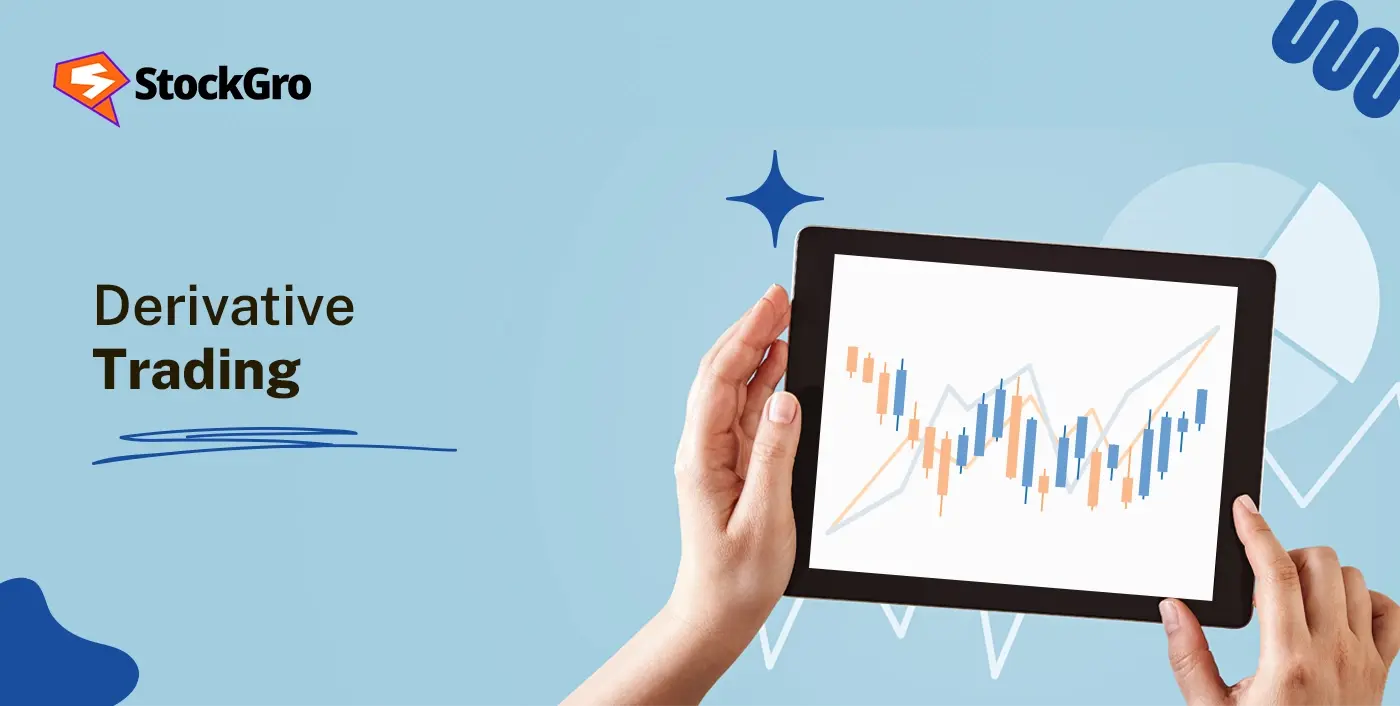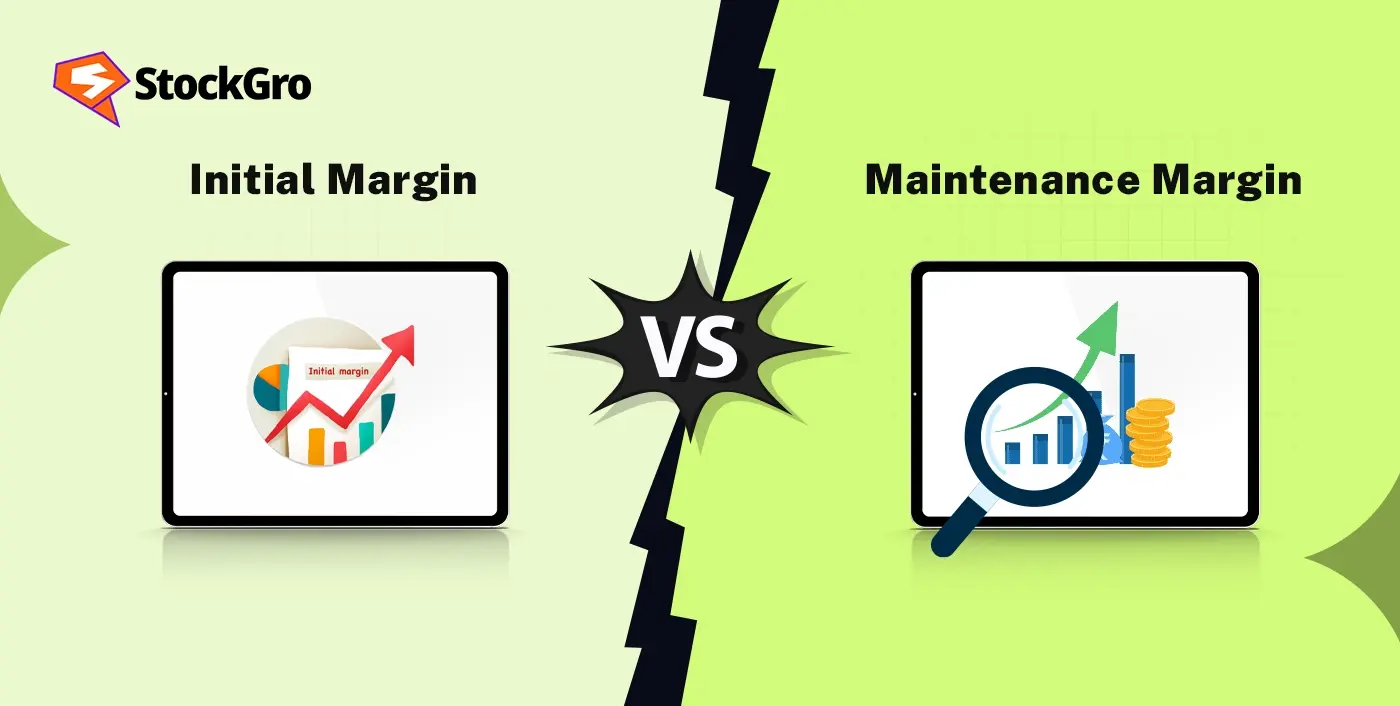
Businesses and traders face the sudden changes in stock price, commodity rate, or currency value which affect budgets, disrupt strategies, and create unforeseen losses. Such market fluctuations make planning and risk management difficult. This is where derivative trading offers a solution. By way of futures, options, and swaps, it helps enable investors and companies to hedge their risks, lock in prices, and make well-informed decisions. In this blog, we will be talking about the types of derivatives trading, advantages and disadvantages, and much more.
What Are Derivatives Trading?
Derivatives trading refers to the purchase and sale of financial agreements whose worth is connected to an underlying instrument like equities, commodities, or currencies. These contracts like futures, options or swaps enable participants to hedge against price shifts or speculate on price movements without ever taking ownership of the underlying asset. Thus, it forms an important part of the derivatives market connecting risk management with price discovery.
Types of Derivatives
When trading derivatives different instruments serve distinct purposes. The main categories are listed below.
- Futures: Standardised futures contracts that lock in the purchase or sale of an asset at a fixed price on a specific date in the future. These are exchange-traded, adjusted to market value daily, and are considered highly liquid.
- Options: Options contracts provide the right, without the obligation, to purchase (call) or sell (put) an asset at a predetermined price before expiry. They allow flexible strategies and risk management.
- Forwards: These are tailor-made agreements between two counterparties to trade an asset at a later date for a decided price, usually handled in the over the counter market.
- Swaps: Contracts where parties agree to exchange cash flows or financial instruments, often linked to interest rates or currencies. They help manage exposure to market fluctuations and can be tailored to specific needs..
How Derivative Trading Works
Derivative trading works through contracts tied to an underlying asset like stocks, commodities or currencies. These contracts set terms for buying or selling the asset at a predetermined price or date. Traders can use them to manage exposure to price changes or to take speculative positions. By tracking market movements, contract details and overall conditions, participants in the derivatives market can plan and execute trades that respond to price fluctuations without directly owning the underlying asset.
Popular Strategies: Straddle, Strangle, Collar, Iron Condor
Some of the most commonly used strategies in derivative trading are as follows:
- Straddle
This approach uses the purchase of both a call and a put option with identical strike and expiry. It benefits when the asset shows a significant price swing in either upward or downward direction.
- Strangle
In this strategy, both a call and a put are bought at different strike levels but with the same expiration date. It works when the asset shows significant price movement, though it requires a larger move than a straddle to be effective.
- Collar
A collar is built by holding the asset, adding a protective put, and simultaneously writing a call option. This creates a range where the possible loss is limited, and so is the potential upside, making it a controlled-risk approach.
- Iron Condor
It is a strategy that merges four options, two puts and two calls, spread across separate strike prices. It is designed to benefit when the underlying asset remains within a specific price range, creating multiple points of limited profit and limited risk.
Who Participates in Derivatives Markets
The space for derivatives attracts multiple players, such as:
- Hedgers: Businesses and investors use derivatives to reduce the impact of changing prices in commodities, currencies, or interest rates.
- Speculators: These participants take positions in futures or options with the aim of benefiting from expected market price movements.
- Arbitrageurs: They identify price differences of the same asset across markets and enter trades to capture low-risk profit opportunities.
- Institutions: Banks, mutual funds, and insurance companies rely on derivatives for portfolio diversification and structured investment approaches.
- Retail investors: Individuals access derivative products through brokers and exchanges for exposure to various asset classes.
How To Trade In Derivatives Market
The process of start doing derivative trading involves multiple steps such as:
- Open a trading account: Choose a SEBI registered broker who offers derivative trading with a user friendly platform. Meet the eligibility criteria of being 18 years old, having a PAN card and complete the KYC process before funding the account for trading.
- Funding the account: Deposit the initial amount in the trading account and make sure the amount is manageable and scalable as you grow in trading derivatives.
- Market analysis and strategy: Study price data, charts, and market behaviour using technical tools, while creating a strategy that defines entry, exit, risk tolerance, and investment objectives.
- Manage the risk: Use hedging with futures or options, apply stop-loss orders, and design safeguards to control possible losses while preserving invested capital.
- Regulatory compliance and taxation: Follow SEBI regulations, trade only through registered brokers, and remain aware of tax implications linked to profits or losses from derivative trading.
Risk Mitigation Strategies for Derivative Trading
Derivative trading involves financial exposure, which can be managed through various strategies such as:
- Using hedging techniques where futures or options contracts are employed to offset possible losses in the underlying asset.
- Applying stop-loss orders that automatically exit positions once prices move beyond a set limit.
- Diversifying across asset classes like equities, commodities, and currencies to balance overall exposure.
- Managing position sizing by limiting contract quantities to reduce the effect of adverse movements.
- Monitoring margin requirements regularly to avoid sudden liquidations due to market volatility.
- Following a disciplined approach to contract selection based on liquidity and trading volume to ensure smooth entry and exit
Advantages of Derivative Trading
Derivative trading offers multiple benefits that serve different financial purposes. Some of which are:
- Risk Management: Derivatives allow participants to reduce the effect of price changes in stocks, commodities, or currencies by fixing future prices through contracts.
- Leverage: With a small amount of margin, traders can take larger positions, making it possible to handle higher-value contracts with limited capital.
- Liquidity: Many derivative contracts are actively traded, which helps in smooth buying and selling without significant delays or large price differences.
- Price Discovery: Futures and options often indicate how markets expect prices to move, offering useful signals for broader financial decisions.
- Hedging and Speculation: Businesses hedge against risks, while traders use derivatives to benefit from expected market change
Risks & Drawbacks
Derivative trading comes with certain limitations that participants need to be aware of, and the core ones are:
- Price changes in the underlying asset can create large and sudden variations in contract value.
- Leverage amplifies gains as well as losses, making minor price changes carry substantial financial impact.
- Complex contract structures such as futures, options, or swaps require advanced understanding to use correctly.
- Limited liquidity in certain contracts may make it difficult to close positions at desired levels.
- High volatility often increases spreads and transaction charges, raising overall trading costs.
- In OTC markets, counterparty risk exists as trades lack the protection of centralized clearing.
- Mispricing and valuation challenges can lead to unexpected results, affecting traders and institutions alike.
Regulatory Framework & Industry Oversight
The process of derivative trading in India operates under a defined legal and regulatory structure, as follows:
- The SEBI Act, 1992 empowers SEBI to regulate and curb unfair practices; the Securities Contracts (Regulation) Act, 1956 legitimizes derivative contracts under Section 18A; and the Companies Act, 2013 ensures disclosures and governance for listed entities.
- The FUTP Regulations, 2003 (Regulation 4(2)) prohibit fraudulent or manipulative trades; the SEBI circular dated Aug 27, 2014, prescribes the norms for the Core SGF, default waterfall and the FPI Regulations, 2019 (Regulation 22) govern foreign participation in derivatives, often limited to hedging.
- SEBI’s master circular prescribes eligibility criteria for derivative contracts, standard contract design, SPAN-based margin with exposure buffers, daily MTM settlement, and strict position limits to prevent concentration of contracts by a single participant.
Dynamic & Emerging Practices (AI-driven hedging)
In derivative trading, new-age practices are shaped by advanced technologies such as AI-driven hedging as follows:
- Real-time adaptability: Machine learning models track market prices, news, and sentiment to adjust hedge positions instantly, offering flexibility beyond static approaches.
- Predictive analytics: Large datasets, from historical prices to social media inputs, are processed to forecast movements and fine-tune hedging strategies.
- Reinforcement learning: Deep hedging systems learn from experience, testing scenarios and costs to build practical and robust hedge decisions.
- Sentiment analysis integration: AI reads market mood through natural language inputs from reports and news, aligning hedges with evolving sentiment.
- Automation & speed: Automated tools execute trades quickly, reducing delays linked to manual intervention and increasing efficiency.
- Scenario simulation & stress testing: Systems run multiple possible market situations to test how hedges perform under different conditions.
- Synthetic data for training: AI creates synthetic data to improve models where real data is limited or noisy, strengthening hedge quality.
Conclusion
From global exchanges to digital platforms, derivative trading has moved far beyond its early role as a hedge. Today, it supports innovation in pricing, portfolio structuring, and even algorithmic strategies. As technology and regulation advance together, the derivatives market stands as one of the most dynamic spaces in finance, balancing creativity with control while opening new avenues for both institutions and individuals worldwide.
FAQs
Derivative trading involves buying and selling financial contracts whose value is derived from an underlying asset, such as stocks, commodities, or currencies. Traders use derivatives to gain exposure to price movements without owning the asset directly. Contracts include terms for buying or selling at a future date or price.
The main types of derivatives include futures, options, forwards, and swaps. Futures and forwards are agreements to buy or sell an asset at a set price on a future date. Options provide the right, not obligation, to buy or sell. Swaps are agreements to exchange cash flows or financial instruments.
Derivatives help hedge against price risks by locking in prices or offsetting potential losses in the underlying asset. Speculators use them to profit from price fluctuations by taking leveraged positions, aiming to gain from market movements without owning the actual asset.
Derivatives offer benefits like leverage, allowing greater exposure with less capital; risk management through hedging; price discovery that reflects market expectations; and access to markets or assets otherwise difficult to trade directly.
Risks include high leverage leading to significant losses, counterparty risk if the other party defaults, market risk from price volatility, complexity causing mispricing or misuse, and liquidity risk that may prevent timely trade exits. Proper understanding and risk controls are essential.
The regulatory framework for derivatives trading in India is governed by SEBI under acts like the SEBI Act, Securities Contracts Regulation Act, and Companies Act. It enforces fair practices, margin requirements, daily settlements, position limits, and governs foreign participation to ensure market stability.

